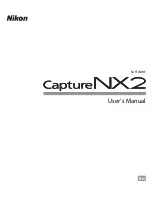
Chapter 4
NI-DNET Programming Techniques
4-12
ni.com
2.
Initialize the array to all zero.
for (I = 0; I < 4; I++)
OutputAsm [I] = 0;
3.
Assume you have two boolean variables,
RunFwd
and
ResetFault
,
of type
NCTYPE_BOOL
. For LabWindows/CVI, these variables could
be accessed from front panel buttons. The following code inserts these
boolean variables into
OutputAsm
.
if (RunFwd)
OutputAsm [0] |= 0x01;
if (FaultReset)
OutputAsm [0] |= 0x04;
4.
Assume you have an integer variable
SpeedRef
of type
NCTYPE_INT16
. For LabWindows/CVI, this variable could be
accessed from a front panel control. The following code inserts this
integer variable into
OutputAsm
.
*(NCTYPE_INT16 *)(&( OutputAsm[2])) = SpeedRef;
5.
Write the output assembly to the remote device.
status = ncWriteDnetIO(objh, sizeof(OutputAsm),
OutputAsm);
For information on NI-DNET’s C language data types and their equivalent
DeviceNet data types, refer to Chapter 1,
NI-DNET Data Types
, of the
NI-DNET Programmer Reference Manual
.
Using Explicit Messaging Services
The NI-DNET Explicit Messaging Object represents an explicit messaging
connection to a remote DeviceNet device. You use
ncOpenDnetExplMsg
to configure and open an NI-DNET Explicit Messaging Object.
The following sections describe how to use the Explicit Messaging Object.
Get and Set Attributes in a Remote DeviceNet Device
The two most commonly used DeviceNet explicit messages are the Get
Attribute Single service and the Set Attribute Single service. These services
are used to get or set the value of an attribute contained in a remote device.
The easiest way to execute the Get Attribute Single service on a remote
device is to use the NI-DNET
ncGetDnetAttribute
function. The
















































